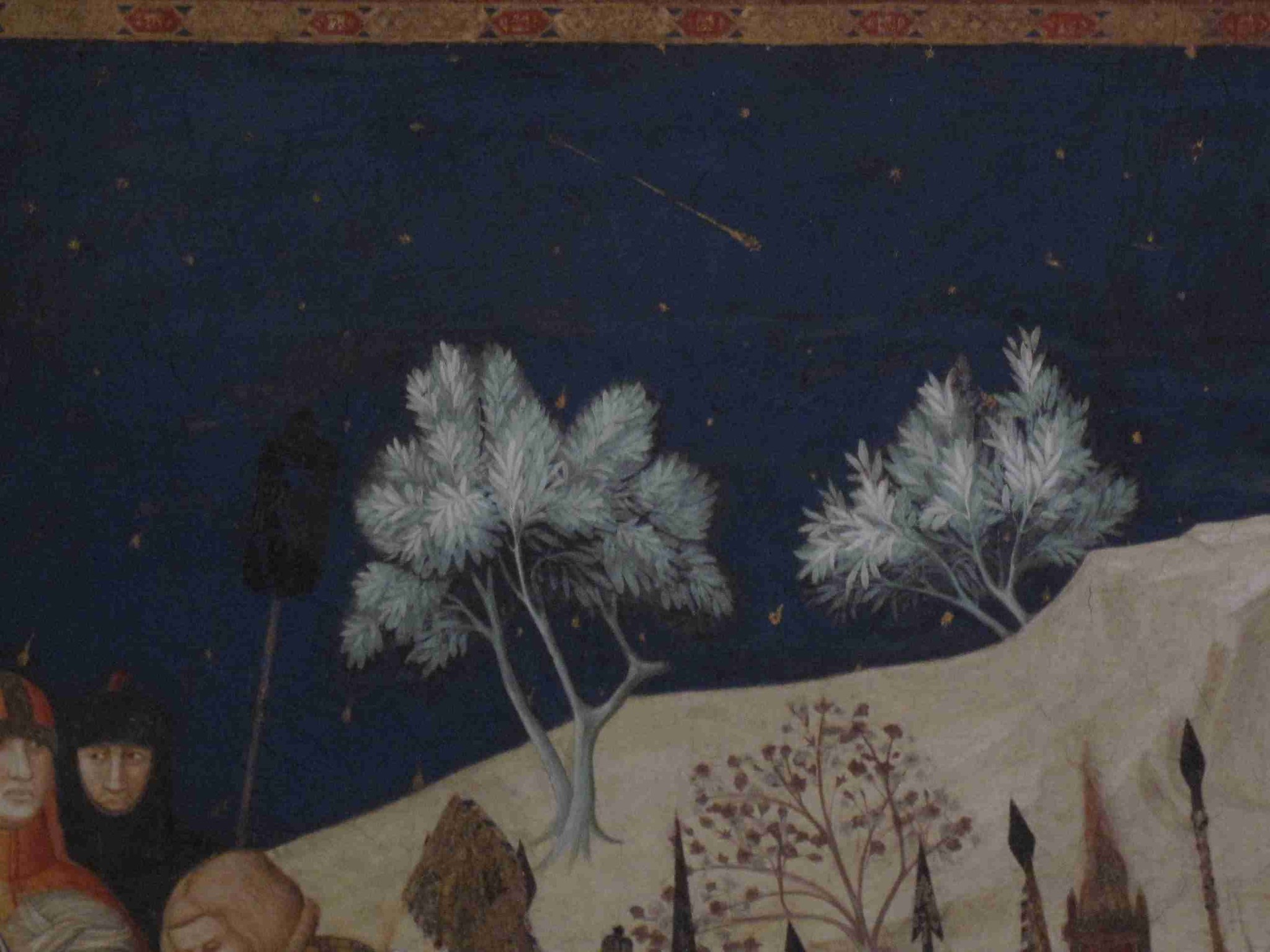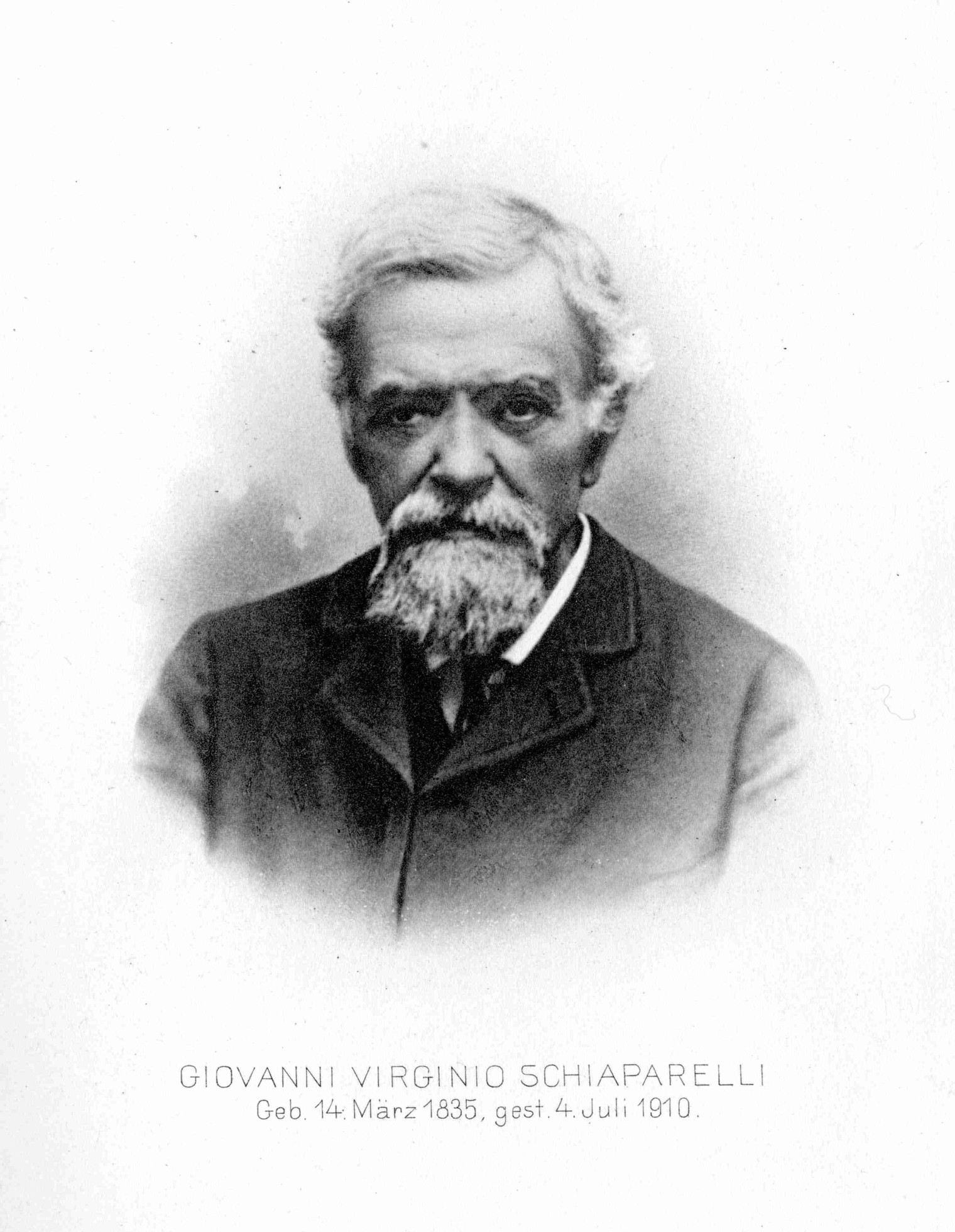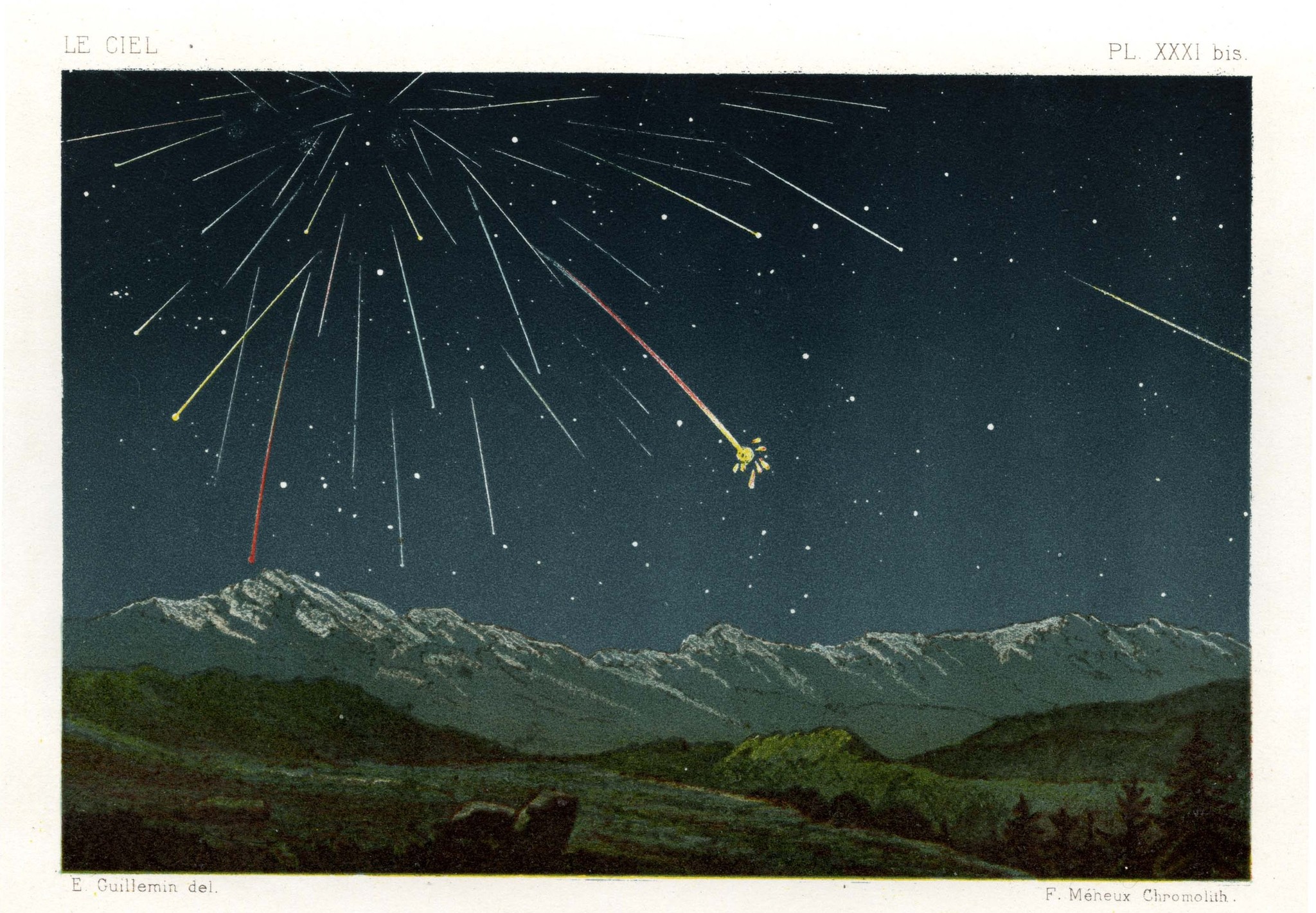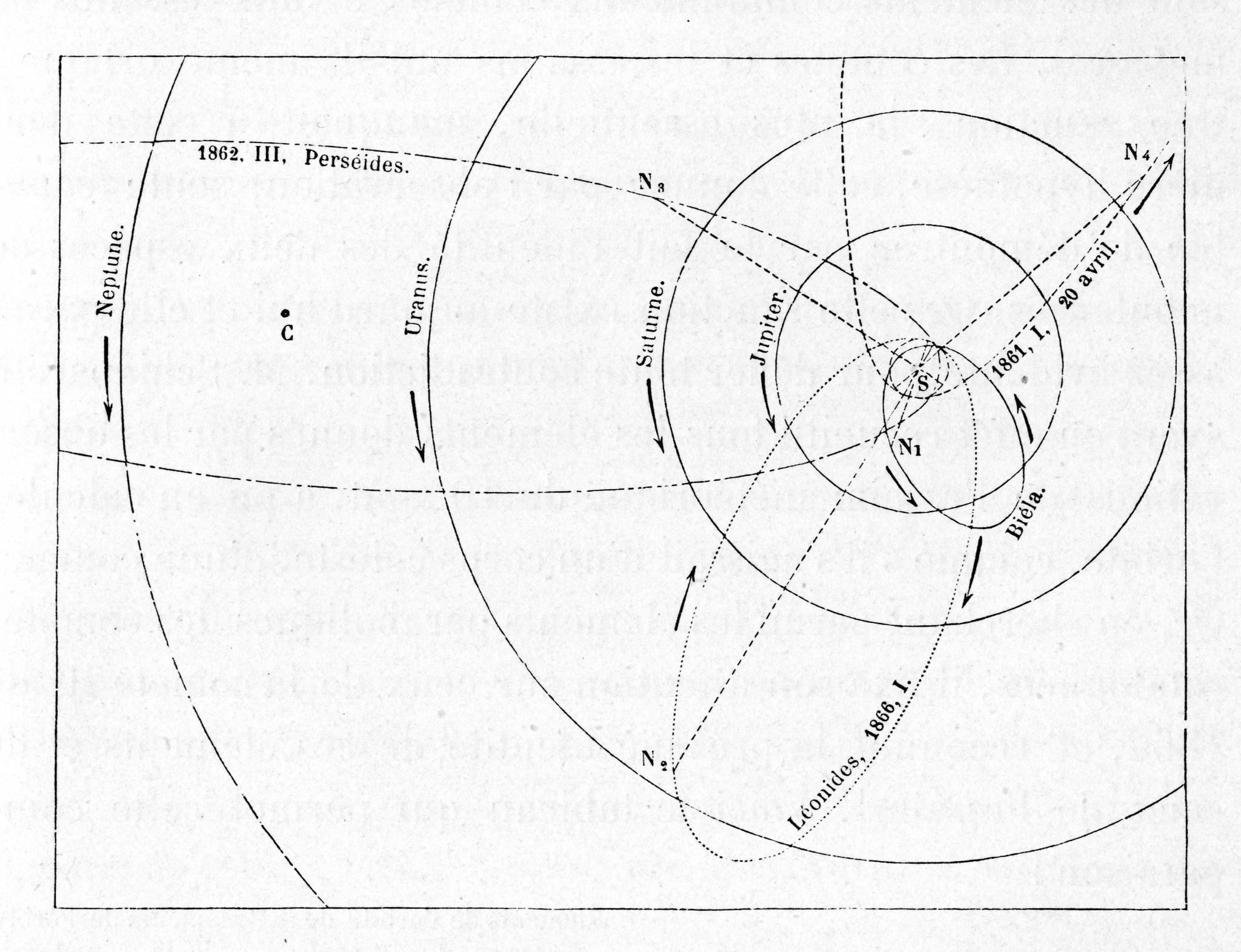What is the origin of those showers, renewed every year? The Italian astronomer Giovanni Schiaparelli (1835-1910) found the explanation in 1866: the shooting stars are fragments of comets. Indeed, each year in August, the Earth passes through the orbit of the periodic comet 109P/Swift-Tuttle, discovered in 1862, and in November through that of the periodic comet 55P/Tempel-Tuttle, discovered in 1866. Like all comets, they continually lose material. A part forms the tail, while the larger solid particles are distributed all along the orbit of the comet. The repulsive force of the Sun is negligible with respect to the attraction of the Sun for large grains, so that these grains have the same orbit as the comet nucleus without forming a tail. When the Earth comes through this orbit, the particles fall at high speed into the Earth’s atmosphere, causing the shooting stars.

Une étoile filante, détail de l’arrestation du Christ, fresque de Pietro Lorenzetti dans l’église inférieure de la basilique Saint-François d’Assise, ca. 1315.
Crédit : James Lequeux

Portrait de Schiaparelli
Crédit : Observatoire de Paris
When the Earth passes through the tail of a comet, which happens quite often because it is spread over huge distances, there is in some cases a meteor shower, which reveals the presence of dust in the tail.
The meteor showers are sometimes spectacular. Such was the case on November 17, 1872. The dust of these shooting stars came from the periodic comet 3D/Biela, which had broken into two pieces at its perihelion in 1852. It has not been seen later, but the passage of the Earth in its orbit in 1872 was accompanied by a huge meteor shower. Clearly, most of the comet material was then distributed along its orbit.

Les Perséides. Les trajectoires lumineuses des particules paraissent provenir d’un point situé dans la constellation de Persée, par un effet de perspective.
Crédit : Planétarium de Montréal (Sophie DesRosiers)The orbit of different periodic comets associated with these rains is drawn. When the Earth, whose orbit is represented by the small circle in the center, crosses the orbit of a comet, the solid fragments that are distributed along the orbit enter at high speed the Earth’s atmosphere, forming a meteor shower. The radius of Earth’s orbit is about 150 million kilometers (1 astronomical unit, AU) and that of the orbit of Neptune 30 AU.

La Pluie d'étoiles filantes du 27 novembre 1872. Gravure tirée de Le Ciel : notions élémentaires d'astronomie physique / Amédée Guillemin, 1877.
Crédit : Observatoire de Paris